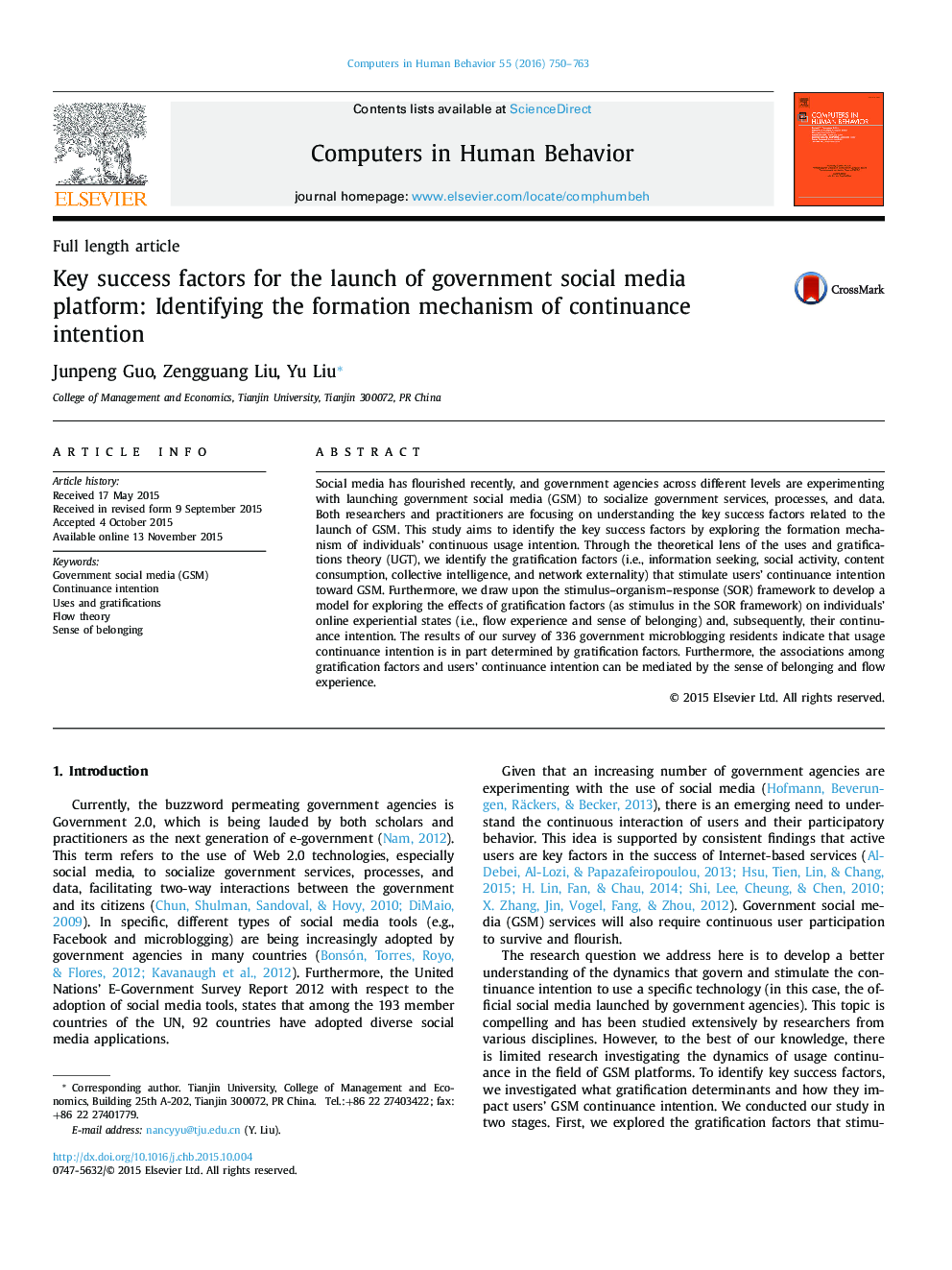| Article ID | Journal | Published Year | Pages | File Type |
|---|---|---|---|---|
| 10312707 | Computers in Human Behavior | 2016 | 14 Pages |
Abstract
Social media has flourished recently, and government agencies across different levels are experimenting with launching government social media (GSM) to socialize government services, processes, and data. Both researchers and practitioners are focusing on understanding the key success factors related to the launch of GSM. This study aims to identify the key success factors by exploring the formation mechanism of individuals' continuous usage intention. Through the theoretical lens of the uses and gratifications theory (UGT), we identify the gratification factors (i.e., information seeking, social activity, content consumption, collective intelligence, and network externality) that stimulate users' continuance intention toward GSM. Furthermore, we draw upon the stimulus-organism-response (SOR) framework to develop a model for exploring the effects of gratification factors (as stimulus in the SOR framework) on individuals' online experiential states (i.e., flow experience and sense of belonging) and, subsequently, their continuance intention. The results of our survey of 336 government microblogging residents indicate that usage continuance intention is in part determined by gratification factors. Furthermore, the associations among gratification factors and users' continuance intention can be mediated by the sense of belonging and flow experience.
Related Topics
Physical Sciences and Engineering
Computer Science
Computer Science Applications
Authors
Junpeng Guo, Zengguang Liu, Yu Liu,
